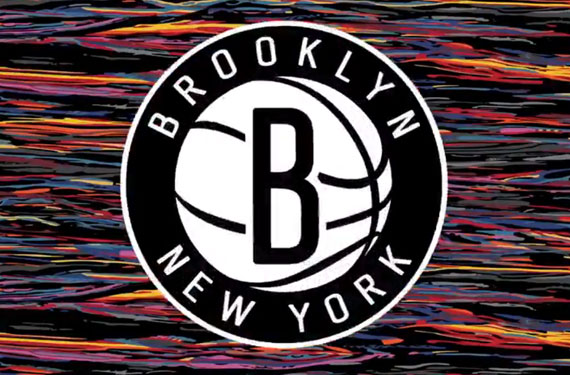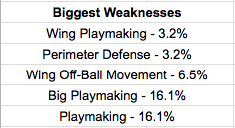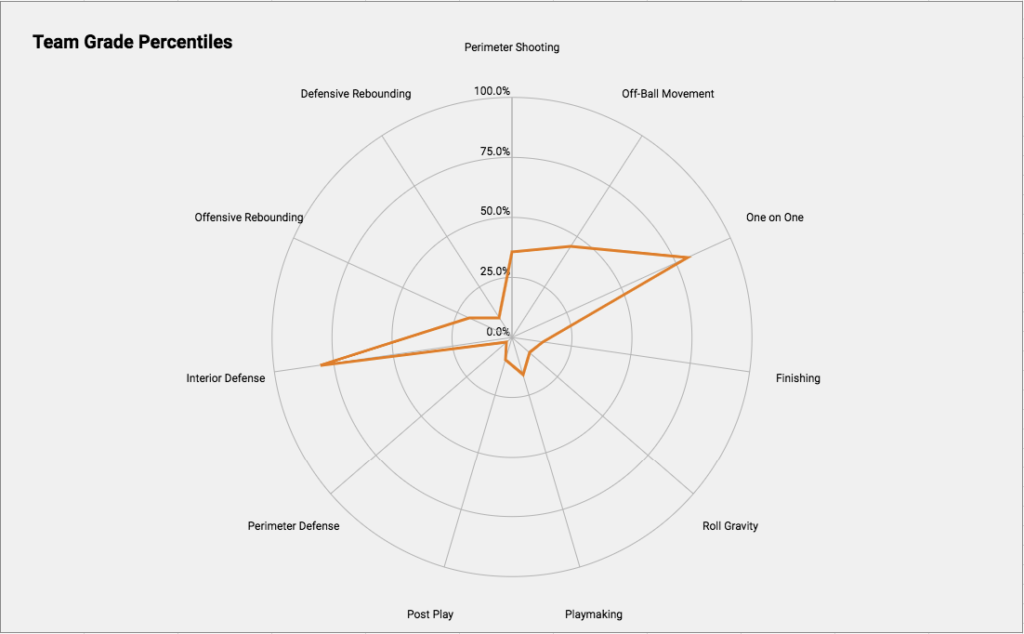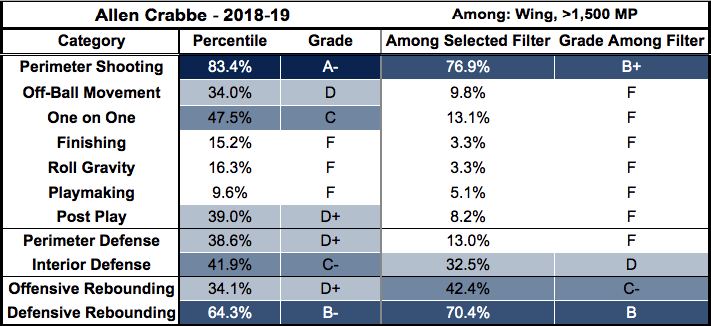
Examining the Nets weaknesses
There are 17 days left in the NBA regular season. The Nets have 8 games remaining. Facing a daunting schedule to close out the year, Brooklyn is simply trying to hang on to their current playoff spot. As of now, the odds are in their favor. Fivethirtyeight is giving them an 89% chance to make the postseason.
We recently examined what the Nets’ strengths are. It wasn’t exactly the longest list. The truth is, the Nets just aren’t that good.
With that established, let’s look at Brooklyn’s weaknesses. Should the team survive their final stretch of the season, they’ll be matched up with a superior team in the first round looking to hunt the Nets’ flaws. Self reflection is important in order to anticipate how your opponent may attack you.
Data and Tools
This was discussed in the piece regarding strengths, so hopefully you read it. If not, here is a quick refresher.
Thanks to our proprietary grading system, we can pinpoint every team’s strengths and weaknesses based on roster construction. This allows us to place each team’s strengths and weakness into percentile rankings. For the purpose of this exercise, here are the Nets’ weaknesses.

The numbers on the side represent the percentile rank. So the Nets fall into the 3rd percentile for wing playmaking (i.e. last among all teams). Woof. We also have visual representations in the form of two spider charts. The first image will show how each team fairs relative to the entire league in the 11 categories we grade, while the second image will show the same information only broken out by position.


Wing Playmaking
As noted above, the Nets have a sever lack of playmaking from their primary wing players. While they are blessed with four lead guards that excel in this area, the skillset does not transfer to their larger perimeter players.
The bulk of the wing minutes go to three players; DeMarre Carroll, Allen Crabbe, and Rodions Kurucs. For those wondering, due to the way we track and sort players, Rondae Hollis-Jefferson is considered a power forward with his advanced position being a big in our database.
Not only are all three wing players not good in the playmaking department, they’re down right terrible.



That is two F’s and a D that downgrades to a D- when compared to other wings having logged at least 1,500 minutes this season. That is… not great. The lead ball handlers on this team have all of the playmaking responsibilities. On the one hand, that is why you pay your lead ball handler. On the other, the idea is to have the most versatile/well-rounded roster possible.
You can see why Brooklyn is in the 3rd percentile in this category.
Perimeter Defense
As you can see above, among the three primary wings on the team, two of them are an F perimeter defender among their position, while another is a C-. It doesn’t get much better among the guards.
| Player | Perimeter Defense | Grade Among Position* |
| D’Angelo Russell | C | D |
| Spencer Dinwiddie | C | D- |
| Caris LeVert | B | B- |
| Shabazz Napier | C+ | C |
| Joe Harris | C- | D+ |
*At least 1,500 minutes played
Russell, Dinwiddie, and Harris are flat out bad in this area, and they might be the team’s three most important players. The poor perimeter defense leads directly into another huge weakness for the team; an absolute inability to guard athleticism. Here’s how the team has faired recently against their most athletic opponents:
- Bradley Beal – 31 points on 12/22 shooting
- Kemba Walker – 25 points, 7 assists, 4 rebounds, 4 steals
- Derrick Jones Jr. – 18 points on 7/10 shooting
- Larry Nance Jr. – 17 points on 6/10 shooting, 10 rebounds, 4 steals
- John Collins – 33 points on 13/20 shooting, 19 rebounds
- Paul George – 25 points, 9 rebounds
- Russell Westbrook – 31 points, 12 rebounds, 11 assists
- Lou Williams – 25 points on 8/16 shooting
- De’Aaron Fox – 27 points on 10/20 shooting, 9 assists
For a team staring down the barrel at having to guard Giannis/Bledsoe/Middleton, Kawhi/Siakam/Lowry, or Butler/Tobias/Simmons in the first round, this is a major, major area of concern.
Big Playmaking
While the bigs on Brooklyn have their positives, playmaking isn’t one of them. Both Jarrett Allen and Ed Davis have an assist percentage in the single digits. Allen’s playmaking grade among bigs that have logged at least 1,500 minutes is a D, while Davis’ is an F. Circling back to Hollis-Jefferson, his grade among the same filter is a C.
Lack of Strengths
This came up when highlighting that the Nets just aren’t that good, but the team doesn’t have a lot of strengths. They rank in at least the 80th percentile in three separate categories, and their next best strength is in the 45th percentile. That is alarming.
After watching Brooklyn all season, it’s still difficult to pinpoint what their bread and butter is. They have four guards that are good at getting into the teeth of the defense and taking it from there, but that doesn’t appear to be the most sustainable model. They also have Joe Harris the assassin, but will he be able to maintain the same level of effectiveness in the playoffs?
While the Nets are a wonderful story of a team rebounding after being hit with the black plague, and clearly hustle hard, at some point we have to start questioning Kenny Atkinson. Not to say he is bad, but he seems to get nothing but praise, and the praise is never fact checked.
According to our database, Atkinson ranks in the 50th percentile among coaches this season offensively. The metric measures if a team is under or over performing expectations given who is on the roster. Defensively, Atkinson is in the 29th percentile.
Should coaching be considered a weakness? This probably needs to be left to be determined.
